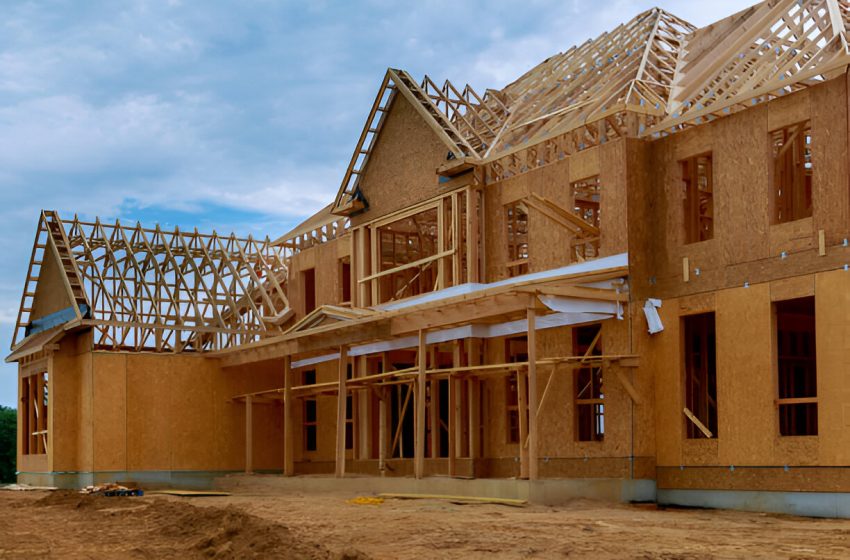The Evolution of House Framing: From Traditional to Modern Methods

House framing is the backbone of home construction, a critical element that shapes the structural integrity and design of any building. Over time, house framing techniques have evolved dramatically, reflecting advances in technology, materials, and construction practices. From the early days of timber-framed homes to modern innovations like steel and modular framing, the evolution of house framing has paved the way for safer, more efficient, and energy-conscious homes. This article delves into how house framing has transformed over the years, highlighting both the traditional methods that laid the foundation and the modern techniques that define contemporary construction.
Traditional House Framing
In the early days of construction, house framing was a labor-intensive process that relied heavily on natural materials, primarily wood. The most prominent traditional method, known as timber framing, dates back centuries and was used extensively in the construction of barns, homes, and even monumental buildings. Timber framing used large wooden beams and joints, connected with wooden pegs or metal fasteners. This technique created sturdy, long-lasting structures, many of which still stand today.
Timber Framing
Timber framing was the dominant method for house framing up until the 19th century. Its simplicity and durability made it ideal for rural and early urban development. Builders would source heavy timbers from local forests and cut them to fit precisely into the structural framework of the house. The joints were meticulously crafted, and the entire structure was often assembled without nails or screws, relying instead on traditional joinery techniques.
While timber framing was highly durable, it required skilled labor and significant time investment, limiting its use in larger, more populated areas. As cities grew, the need for quicker and more scalable methods led to the development of new framing techniques.
Balloon Framing
The 19th century saw the advent of balloon framing, a method that revolutionized home construction by making it faster and more accessible. Balloon framing involved using long, lightweight wooden studs that ran continuously from the foundation to the roof. These studs, spaced closely together, formed the skeleton of the house, with horizontal boards (known as ledgers) supporting floors and walls.
This method dramatically reduced construction time, as it allowed homes to be framed quickly using mass-produced lumber and nails. However, balloon framing had its drawbacks. The continuous wall cavities created by the long studs allowed fire to spread rapidly from floor to floor, leading to safety concerns. As a result, newer techniques began to emerge to address these issues.
Shift to Modern House
As construction technology progressed, builders sought out more efficient, fire-resistant, and structurally sound methods for framing homes. The 20th century introduced several innovations that transformed house framing into a more advanced and standardized process.
Platform Framing
Platform framing, also known as western framing, replaced balloon framing as the standard method in modern construction. Unlike balloon framing, which uses continuous studs, platform framing builds homes one floor at a time. The walls of each story are framed separately and then stacked on top of the previous level. This allows for better fire resistance, as each floor acts as a fire break.
Platform framing is easier to construct than balloon framing and provides superior structural stability. It also allows for better insulation, improving energy efficiency in modern homes. This method is now the dominant technique used by builders across the world.
Innovations in Modern House Framing
Today’s house framing techniques continue to evolve, incorporating new materials and methods that improve both efficiency and sustainability. The demand for greener, more energy-efficient homes has driven advancements in framing technology.
Steel Framing
One of the most notable innovations in house framing is the use of steel. Steel framing offers superior strength compared to wood, making it an ideal choice for areas prone to natural disasters like earthquakes or hurricanes. Steel is non-combustible, resistant to pests, and requires less maintenance over time. While steel framing has been popular in commercial construction for decades, it is now increasingly being used in residential buildings.
However, working with steel framing requires specialized skills and tools, meaning homeowners should collaborate with experienced professionals like general contractors for home remodeling LA to ensure the construction process runs smoothly and meets local building codes.
Modular Framing
Another cutting-edge trend in modern construction is modular framing, which involves prefabricating sections of a house in a controlled factory setting and then assembling them on-site. This method reduces construction waste, shortens build times, and often leads to more consistent quality. Modular homes can be customized to fit any design and can incorporate eco-friendly materials and energy-efficient systems, making them an attractive option for environmentally conscious homeowners.
Intersection of Tradition and Modernity
While modern house framing techniques have transformed the construction landscape, there’s a growing interest in blending traditional craftsmanship with modern technology. For instance, some homeowners are incorporating holistic wellness practices like Reiki Healing Online into their building process, aiming to create living spaces that promote balance, harmony, and energy flow. This approach often influences design choices, materials, and even the orientation of the home to ensure that it feels energetically aligned with the inhabitants.
Whether it’s integrating sustainable materials or applying ancient energy-balancing techniques, the evolution of house framing is not just about structure—it’s about creating homes that support well-being in every aspect.
Conclusion
The evolution of house framing from traditional timber methods to modern modular systems represents an incredible journey of innovation. Each advancement has addressed the challenges of its time, from the need for faster construction in growing cities to the demand for energy efficiency and sustainability in today’s world. As we move forward, house framing will continue to evolve, with new materials and technologies pushing the boundaries of what’s possible.
By combining the strength and durability of modern materials with the precision and craftsmanship of traditional methods, builders can create homes that not only stand the test of time but also promote a healthier and more balanced living environment. The future of house framing lies in this integration, where tradition meets innovation, and where the structures we build reflect both our technological advancements and our deep-rooted desire for harmony and well-being.

